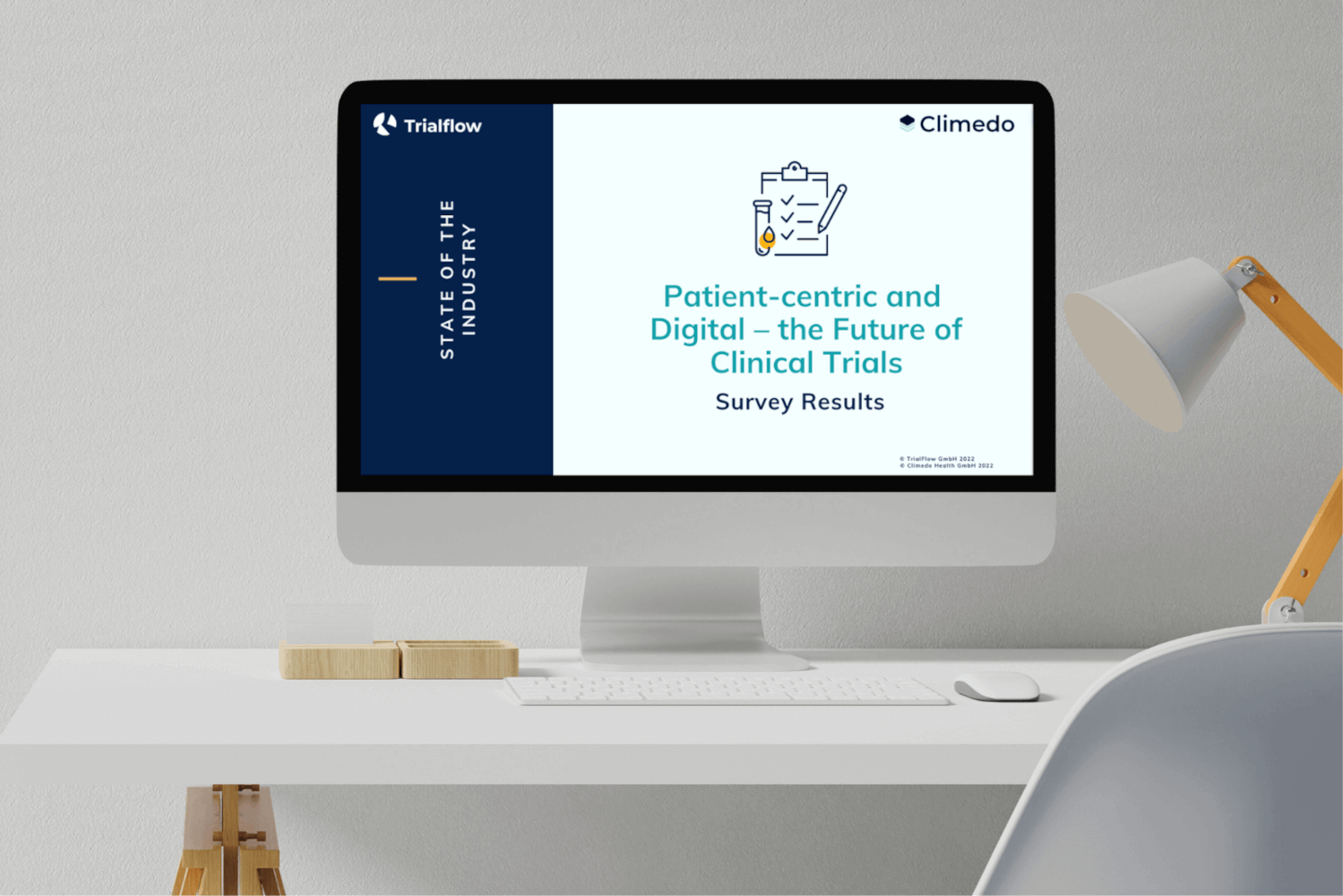How can Telemedicine be Optimized for Broader Use?

DATE
February 07, 2023
AUTHOR
Lena | Customer Success Manager
Telemedicine is inexorably making its way into physician care and clinical trials. In the US alone, the number of online visits has increased 63-fold from 840,000 in 2019 to 52.7 million in 2020. This confirms that remote care offerings, which skyrocketed during the pandemic, are well received by patients. The benefits are clear: Not only is the logistical effort for healthcare professionals reduced thanks to fewer on-site appointments; people from remote regions can also be involved. In addition, patients have to travel less frequently to the doctor’s practice or study site, thus reducing their travel costs and time effort.
Nevertheless, the use of telemedicine isn’t without its challenges: On the one hand, patients expect the quality of virtual care via telemedicine to be equivalent to a personal on-site visit. On the other hand, there is a lack of a uniform, comprehensive set of rules. Regulations change frequently and billing practices vary. A consistent and homogeneous offering is difficult to implement under these circumstances. So how can telemedicine be optimized for a broader range of uses while remaining economically profitable? In this article, we’ll show you three ways to expand the use of telemedicine in your clinical trials.
3 ways to enable broader use of telemedicine:
1) Exploiting the full potential of telemedicine with a uniform set of regulations
2) Counteracting data privacy concerns with education and information campaigns
3) Increasing the efficiency of telemedicine with targeted training
1) Exploiting the full potential of telemedicine with a uniform set of regulations
Even though telemedicine services such as video consultations have already been widely adopted, there is still a lack of a uniform framework. It is true that telemedicine in Germany was given a legislative umbrella when the E-Health Act came into force in 2015. However, this is not a self-contained law, but rather different regulatory bases that are not deeply and comprehensively coordinated with one other. This results in limitations for telemedicine. Video consultation, for example, can only be offered as an accompanying treatment for existing patients.
This leads to uncertainty among stakeholders and patients, unless it is clearly defined which e-health services can be used in addition to the video consultation and how they will be covered. Experts from the government and the healthcare sector must therefore agree on a standard that can be easily applied to the individual aspects of telemedicine. This includes remote diagnosis, electronic data transfer or digital tools for data collection, allowing for the E-Health Act to be adapted quickly.
2) Counteracting data privacy concerns with education and information campaigns
One important cornerstone for a successful telemedicine offering is the efficient and secure collection, processing and exchange of patient-related health data. This sensitive medical data is subject to special protection. Telemedical assistance systems should therefore place great emphasis on security, liability and data protection aspects in their design. In addition, the security of the data can be increased through targeted promotion of underlying technologies and the replacement of obsolete infrastructure in the practices. For example, data can be stored anonymously on external web servers secured by personal IDs and passwords. Sending secure emails from web servers hosted by trusted providers further increases data protection. In the long-term, these measures help to strengthen the trust in telemedicine.
It is also important to counteract uncertainty among patients by actively addressing them in an information campaign. This way, questions about the televisit, data protection or the use of certain digital tools, such as social media, can be answered promptly and quickly before and during the clinical trial. eConsent tools can also support the patients’ decision-making process, for example regarding study participation, and address any concerns. Constant and consistent communication reduces fears, lowers inhibition thresholds and increases patient retention. The relevance of telemedicine is also supported in the latest survey results by Climedo and Trialflow, where 33% of the sponsors and study sites surveyed stated that they already use telemedicine solutions.
Survey Results: Patient-centric and Digital – the Future of Clinical Trials
In the fall of 2022 we conducted a survey together with Trialflow about the future of decentralized and digital elements in clinical trials. 46 respondents from CROs, MedTech, study sites and pharmaceutical companies answered questions regarding the following topics:
- Status quo
- Current challenges
- Outlook into the future of clinical trials

3) Increasing the efficiency of telemedicine with targeted training
In many areas, telemedicine has emerged out of necessity. As a result, a significant proportion of medical staff still feel insecure when dealing with digital tools. Here, it is important to overcome fears of contact and to implement the subtleties and improvements in relation to telemedicine services in a practical manner. Just like patients, physicians and medical staff may have reservations about security and data protection and not use the tools as a result. Providers should do more to raise awareness here.
Targeted training offers and simplified access to training resources for medical staff help them to gain a routine in telemedicine activities more quickly. The more confident and able they are to help answer regulatory and reimbursement questions, the more likely study participants are to remain motivated in the long term. In addition, not only do the physicians’ own skills improve, but so does virtual healthcare and ultimately the quality of patient care.
Conclusion: Telemedicine can be opened up for wider use with targeted measures in terms of education and promotion
Telemedicine in its current form is not yet suitable for all groups. Mistrust of the technology among both patients and medical staff, as well as the lack of digital infrastructure, inhibit its widespread use, especially in structurally weak areas.
Nevertheless, telemedicine offers great potential to reach people and communities that previously had minimal or no healthcare access. Video consultations, for example, can provide a relief especially in therapeutic areas where patients have to wait a long time to get a specialist appointment. Simplified access also increases patients’ motivation to participate in a clinical trial in the first place.
It has been shown that virtual clinical trials including telemedicine in particular have high recruitment rates and low drop-out rates. With the support of telemedicine, they can also be carried out more quickly. Although telemedicine still requires greater acceptance and more widespread use, this can be achieved in the medium term with targeted measures to promote the technology, educate all stakeholders and facilitate access to training opportunities.
Would you also like to use telemedicine in your next clinical trial? We can support you with our digital interfaces within the Climedo platform. Feel free to reach out to us or schedule a software demo!






